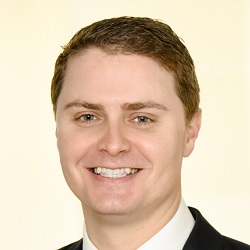Only one solicitor has been sent to the Solicitors Disciplinary Tribunal (SDT) for breaching the ban on referral fees in personal injury cases, it has emerged.
Crispin Passmore, executive director at the Solicitors Regulation Authority (SRA), said the number of reports to the regulator about potential breaches had been in “steady decline” since the ban was introduced in April 2013.
He said the SRA received 154 reports from April 2013 to April 2015, only one of which resulted in a referral to the SDT.
Speaking at the Westminster Legal Policy Forum last week, Mr Passmore said: “Quite a lot of the reports come from other people in the market.
“Businesses should be designed around customers, not regulation. Where changes are made so a business does not fall foul of the referral fee ban, there can sometimes be other issues.”
Mr Passmore said the SRA answered 187 written requests for advice on the ban in 2013 and 80 in 2014, which he said was a “reasonably insignificant” amount and a “quite positive” sign of compliance.
He said some of the questions asked were whether the ban could be avoided by setting up an alternative business structure (ABS) or whether a fee was prohibited if it was paid by someone else.
Mr Passmore compared the introduction of the personal injury referral fee ban with the introduction of MedCo, the compulsory portal for medical evidence in whiplash cases, where solicitors are banned from referring work to reporting agencies in which they have a ‘direct financial interest’.
He added that he hoped there would be fewer attempts to try and “game” this ban.
Earlier Kevin Rousell, head of the Claims Management Regulation Unit (CMRU) at the Ministry of Justice, said although the number of personal injury claims management companies (CMCs) had fallen below a thousand, their annual turnover had increased by 27%.
He said this showed that the “biggest CMCs are making more and more money”.
However, Mr Rousell said the increase in annual turnover in 2014/15 followed an even bigger decline of 33% the previous year, and he expected another fall next year.
He said some personal injury firms had successfully diversified into other accident management activities, such as vehicle recovery, storage and hire. “There’s a lot of good practice out there, but you won’t see it referred to in the media.”
Mr Rousell said the CMRU’s priorities for 2015/16 were nuisance claims and unsolicited marketing, followed by financial products and services, personal injury claims and ‘unauthorised activities’ – companies that should be regulated but were not.
Asked about the future of regulation, Mr Rousell said that ideally there would be a “sector-specific” system, rather than one based on the different professions.
He predicted that, in five years’ time, “there may well be a single regulator of some kind”.
Mr Rousell went on: “Ideally the government would want to see less regulation. There may be less need for CMCs anyway, because there are fewer claims.
“It would fit in well with the deregulation agenda if the sector could look after itself.”
Jonathan White, legal director of National Accident Helpline, said that as of Wednesday last week, the number of personal injury CMCs had fallen from 979 to 951.
“I think it will probably level off at 750-900 unless there is further regulatory change,” he predicted.















Leave a Comment